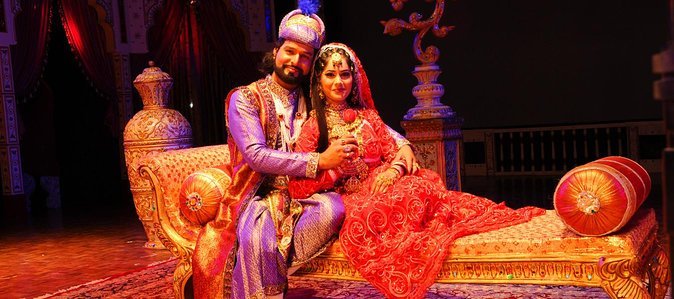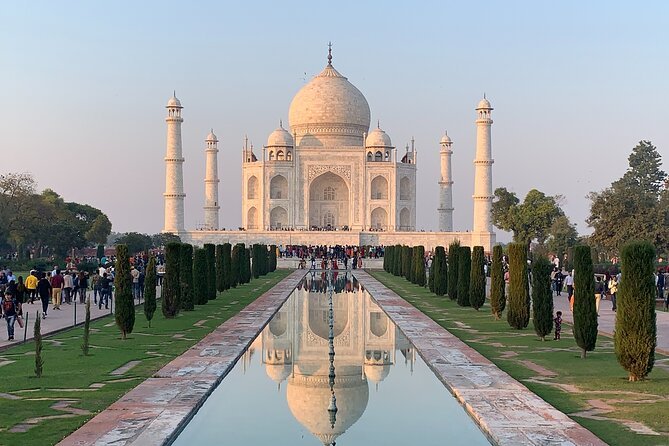Arjumand Banu Begum, known as Mumtaz Mahal, holds a significant place in Mughal history, revered for her beauty, influence, and profound impact on India’s cultural landscape. As Emperor Shah Jahan’s chief consort, she left an indelible mark on history through her support of art, architecture, and the enduring love story symbolized by the construction of the Taj Mahal. Let’s explore her life, legacy, and lasting impact.
Also you like to read Taj Mahal History and Facts: A Comprehensive Guide
Born in 1593 in Agra, India, Arjumand Banu Begum was the daughter of Abdul Hasan Asaf Khan, a prominent figure in the Mughal court. Recognized for her exceptional beauty and intelligence from a young age, she captured the attention of Prince Khurram, later known as Emperor Shah Jahan. Their legendary love story was characterized by devotion and mutual respect.

Delhi Agra one day tour by Car – Book with Local Expert From ₹ 6,500
Delhi Agra one day tour by Car Inclusive of neat and clean Car with Experienced Driver + Local Live Guide on Additional cost – Check Out More!
View DetailsTragedy struck in 1631 when Mumtaz Mahal passed away while giving birth to her 14th child, leaving Shah Jahan devastated. In his grief, he vowed to honor her memory in an unprecedented manner. Thus, he embarked on the monumental task of constructing the Taj Mahal, an architectural marvel that stands as a testament to their eternal love and remains one of the world’s most iconic monuments.
Arjumand Banu Begum family
“The relationship between Shah Jahan and Mumtaz Mahal was characterized by deep love, mutual respect, and profound devotion..”
Arjumand Banu Begum, famously known as Mumtaz Mahal, hailed from a prestigious family entrenched in the Mughal court. She was the daughter of Abdul Hasan Asaf Khan, a notable figure who held high-ranking positions within the Mughal administration. Asaf Khan’s influence and connections afforded his daughter Arjumand Banu Begum opportunities for education, refinement, and exposure to the intricacies of court life from an early age.
Furthermore, Arjumand Banu Begum’s family connections played a pivotal role in shaping her destiny. Her marriage to Prince Khurram, who later ascended the Mughal throne as Emperor Shah Jahan, solidified her status as a central figure in Mughal royalty. Through her familial ties and marriage into the royal household, Arjumand Banu Begum became an integral part of the intricate web of power and influence that defined the Mughal dynasty during the 17th century.

Arjumand Banu Begum and Shah Jahan love story
The love story of Arjumand Banu Begum, famously known as Mumtaz Mahal, and Shah Jahan is one of the most celebrated and enduring tales in history. Their romance began in the Mughal court, where Prince Khurram, later known as Shah Jahan, was captivated by Arjumand’s beauty and intellect. Despite being betrothed to other noblewomen, Khurram’s affection for Arjumand remained steadfast, and their bond deepened over time.
Their love story reached its zenith when Arjumand Banu Begum became Shah Jahan’s chief consort. She accompanied him on military campaigns, served as his confidante, and played a significant role in the affairs of the court. Their relationship was characterized by mutual respect, devotion, and unwavering support for each other. Tragically, Arjumand’s untimely death in 1631 shattered Shah Jahan, who vowed to immortalize their love through the construction of the majestic Taj Mahal. Thus, their love story continues to be immortalized through the enduring symbol of the Taj Mahal, a testament to their eternal bond and devotion.
Shah Jahan and Mumtaz Mahal relationship
The relationship between Shah Jahan and Mumtaz Mahal was characterized by deep love, mutual respect, and profound devotion. Mumtaz Mahal, born Arjumand Banu Begum, captured Shah Jahan’s heart with her exceptional beauty and intelligence from a young age. Their bond strengthened over the years, leading to their marriage in 1612 when Mumtaz Mahal was just 19 years old. From that moment on, she became Shah Jahan’s favorite wife and trusted confidante, accompanying him on military campaigns and actively participating in court affairs.
Shah Jahan’s love and admiration for Mumtaz Mahal were evident in his actions and words. He consulted her on matters of state, valued her opinion greatly, and showered her with lavish gifts and titles. Mumtaz Mahal, in turn, supported Shah Jahan wholeheartedly, offering him unwavering loyalty and encouragement. Their relationship was built on a foundation of mutual respect and understanding, making them inseparable partners in both love and life. Tragically, Mumtaz Mahal’s premature death in 1631 left Shah Jahan heartbroken, leading him to embark on the monumental task of immortalizing their love through the construction of the iconic Taj Mahal.

Taj Mahal history
The Taj Mahal stands as a testament to love and architectural brilliance, recognized globally as one of the most iconic monuments in history. Commissioned by Emperor Shah Jahan in memory of his beloved wife Mumtaz Mahal, construction of the Taj Mahal began in 1632 and took approximately 20 years to complete. Situated on the banks of the Yamuna River in Agra, India, the Taj Mahal is renowned for its stunning white marble facade adorned with intricate inlay work, calligraphy, and geometric patterns.
The architectural design of the Taj Mahal reflects a harmonious blend of Persian, Islamic, and Indian influences, showcasing the mastery of Mughal craftsmanship. The central mausoleum, flanked by four minarets, houses the tombs of Mumtaz Mahal and Shah Jahan, symbolizing their eternal love and devotion. Surrounding the mausoleum are meticulously landscaped gardens, reflecting pools, and ornate structures, creating a serene and picturesque setting. Today, the Taj Mahal stands as a UNESCO World Heritage Site and attracts millions of visitors annually, serving as a timeless symbol of love, beauty, and architectural excellence.
Also you like to read How many days should you stay in Agra to see all the sights?
Arjumand Banu Begum, commonly known as Mumtaz Mahal, was a prominent figure in Mughal history. She was the chief consort of Emperor Shah Jahan, renowned for her beauty, intelligence, and influence in the imperial court. Mumtaz Mahal’s enduring love story with Shah Jahan inspired the construction of the iconic Taj Mahal, a masterpiece of Mughal architecture and a symbol of eternal love.
Arjumand Banu Begum, also known as Mumtaz Mahal, holds significant historical significance as the chief consort of Emperor Shah Jahan during the Mughal era. Her patronage of art, culture, and philanthropy contributed to the flourishing of the Mughal court. Furthermore, her enduring love story with Shah Jahan led to the construction of the Taj Mahal, which remains a symbol of eternal love and architectural brilliance.
Arjumand Banu Begum, commonly known as Mumtaz Mahal, wielded considerable influence over Emperor Shah Jahan as his chief consort. She served as his trusted advisor, providing counsel on matters of state and court affairs. Mumtaz Mahal’s wisdom, intelligence, and unwavering support played a pivotal role in shaping Shah Jahan’s decisions and policies during his reign.
Arjumand Banu Begum, famously known as Mumtaz Mahal, is intricately connected to the Taj Mahal, one of the most iconic monuments in the world. Commissioned by Emperor Shah Jahan as a tribute to his beloved wife Mumtaz Mahal, the Taj Mahal serves as her final resting place. The mausoleum’s construction was inspired by Shah Jahan’s profound love for Mumtaz Mahal, immortalizing their eternal bond and enduring love story for generations to come.
The legacy of Arjumand Banu Begum, also known as Mumtaz Mahal, is enduring and multifaceted. She left an indelible mark on Mughal history through her influence as Emperor Shah Jahan’s chief consort and advisor. Mumtaz Mahal’s enduring love story, epitomized by the construction of the Taj Mahal, continues to captivate hearts worldwide, symbolizing the timeless power of love and devotion. Additionally, her patronage of art, culture, and philanthropy contributed to the cultural richness of the Mughal empire, leaving a lasting impact on Indian history.
Exploring the untold story behind Arjumand Banu Begum’s first husband offers a glimpse into the complex dynamics of Mughal society, marriage customs, and the intricate web of royal alliances. While historical records may not provide concrete details about this enigmatic figure, it is plausible to speculate that Mumtaz Mahal’s first marriage played a significant role in shaping her worldview, relationships, and eventual union with Emperor Shah Jahan. Delving deeper into this hidden truth adds layers of intrigue to Mumtaz Mahal’s life and legacy, shedding light on lesser-known aspects of Mughal history and the intricacies of royal life in 17th-century India.
Discover the hidden truth about Arjumand Banu Begum’s first husband and explore the untold story behind this mysterious figure. Click now for exclusive details!
#MumtazMahal #MughalHistory #RoyalAlliances #MarriageCustoms #HiddenTruths #HistoricalIntrigue #UntoldStories #MughalDynasty #ArjumandBanuBegum #17thCenturyIndia
https://alamgirtajmahalguide.com/arjumand-banu-begum-the-untold-story/





























